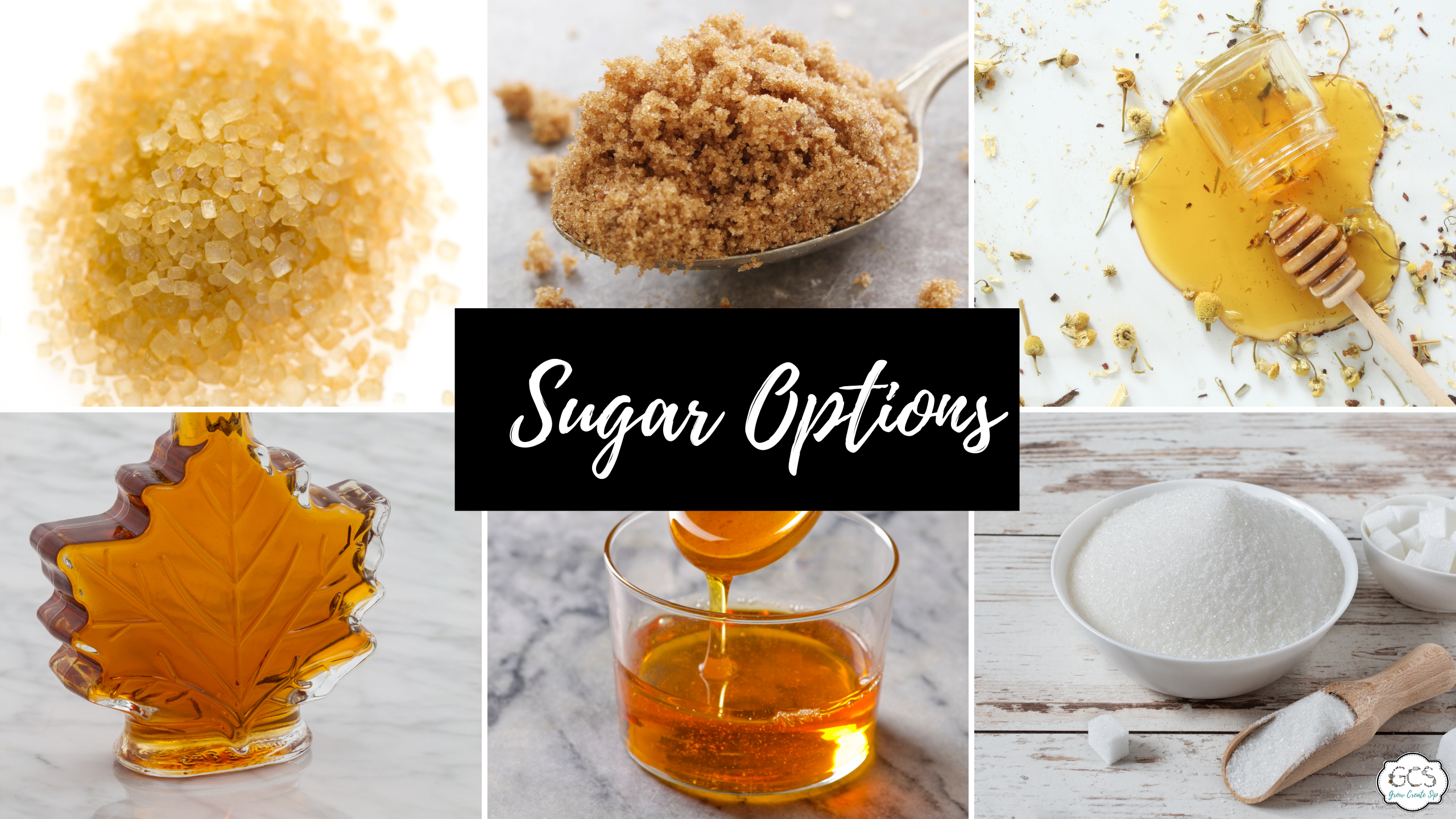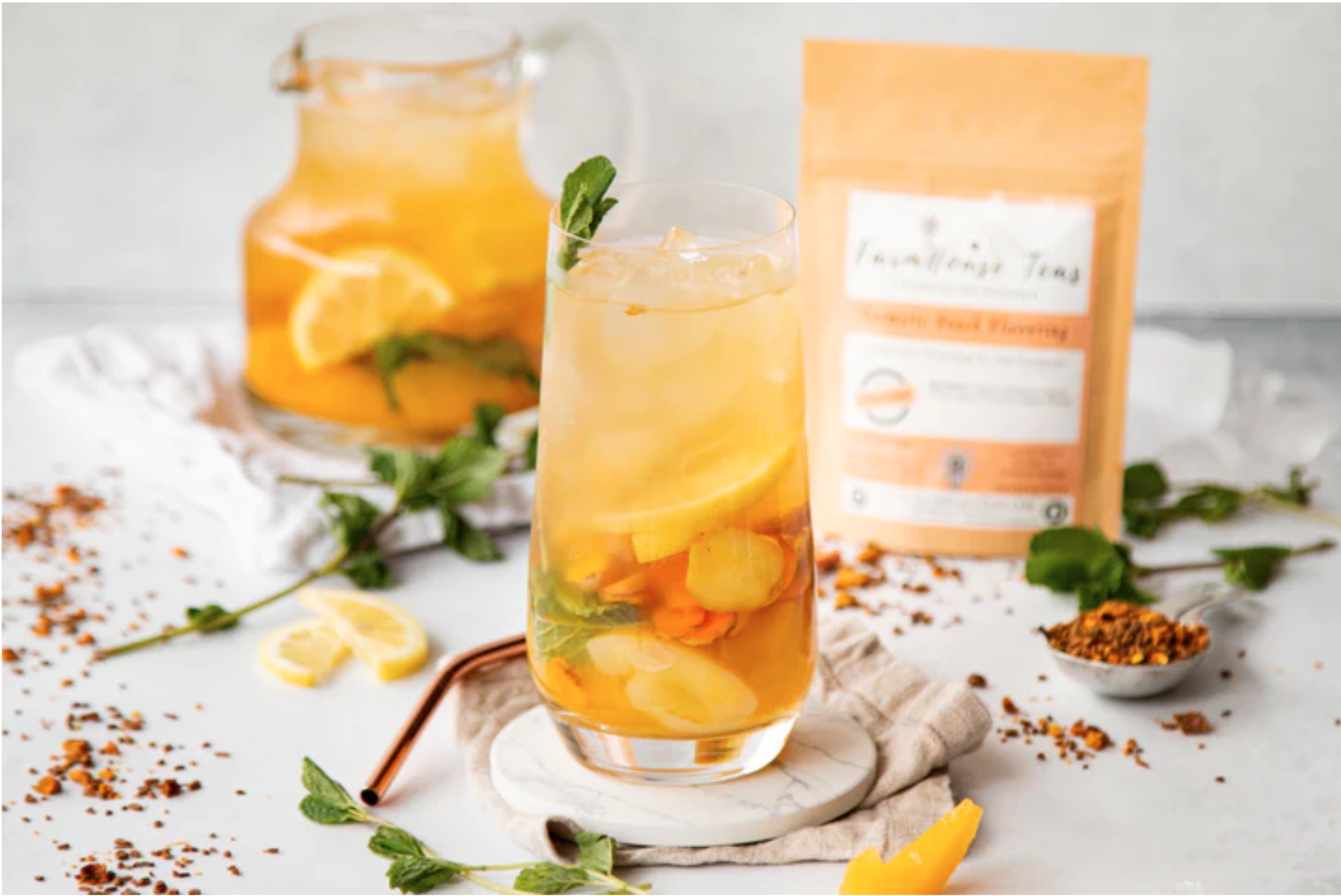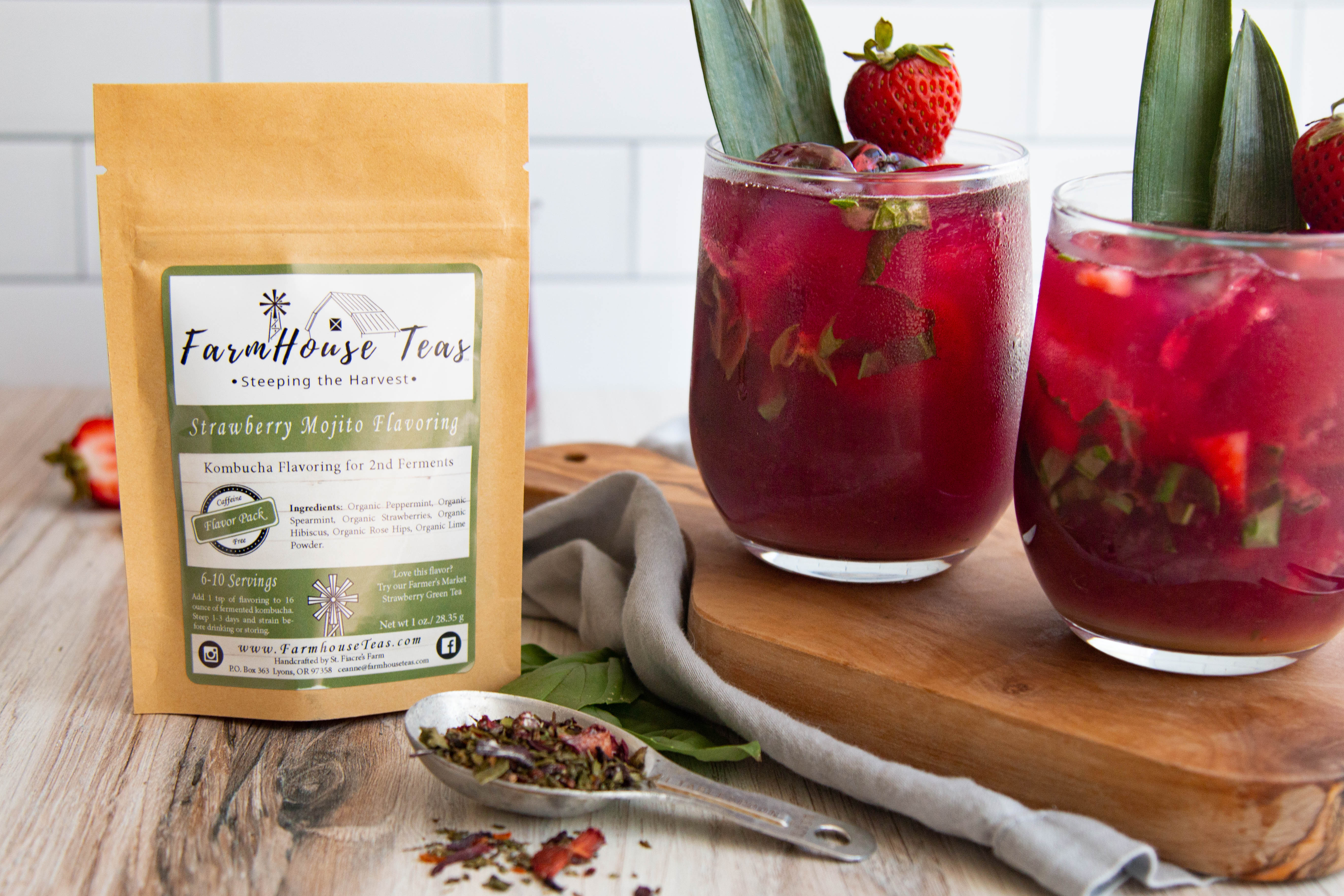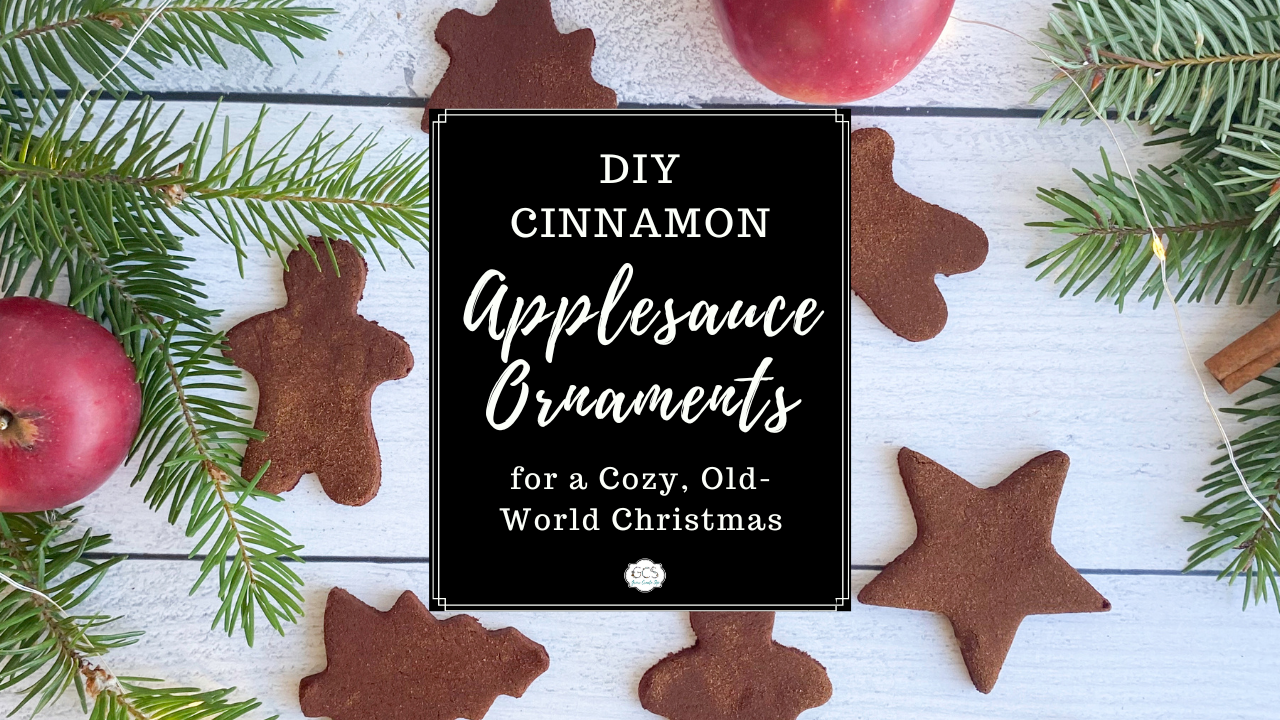Guide to Bottling & Flavoring Kombucha | Second Ferment
Feb 21, 2023
Kombucha might be as old as the hills, but it's taken the world by storm in the last few years. The global market was worth $1.7 billion in 2020! But rather than pay $5-$7 per bottle, more of us prefer to make our own kombucha, putting us in complete control.
If you've tried making kombucha, you know that the second ferment is crucial. That's the time for flavoring kombucha and giving it a helping hand so that it fizzes when it's time to drink it.
Let's explore the best ways to bottle and flavor kombucha so that your homemade variety is even tastier than store-bought!
Making Kombucha - How to Nail the Second Ferment
The second ferment is a crucial step in the kombucha-making process. It takes the plain first-fermentation kombucha that's been hanging out with the SCOBY and transforms it into a fizzy, delightful beverage. This is also the time to add any kombucha flavoring you desire.
At this stage, most people transfer the kombucha from a large vessel into individual flip-top bottles. Adding a little extra sugar - about 1 teaspoon per 16 oz bottle - at this stage will keep the fermentation going a bit longer. That'll produce the natural carbonation you're looking for.
You don't have to add straight white cane sugar at this point. You can play around with:
- Honey
- Agave
- Maple syrup
- Unrefined sugar, such as jaggery, turbinado, and demerara
- Molasses
The benefit of using unrefined sugar and molasses is the higher mineral content. They'll take a little longer to brew, but it's worth it for the benefits. All of these types of sugar will add their own distinctive flavors.
Sugars to Avoid
Sugar gets a bad rap and with good reason. But the kombucha-making process transforms sugar into healthy acids. In short, the sugar is feeding the yeasts and bacteria, not feeding you.
It may be tempting to experiment with sugar substitutes such as xylitol and stevia during the second ferment, but they will not work. They may sweeten the kombucha but they won't feed the yeasts and bacteria, so you won't get any carbonation. Previously we dived deep into all the nitty gritty on types of sugars during the first fermentation here.

The Golden Rules of the Kombucha Second Fermentation
There is one rule every home kombucha brewer must follow - always remove the SCOBY and some plain starter tea before adding flavorings. If you don't, you can get problems with your SCOBY, including:
- Mold
- Weak culture
- Imbalance in the SCOBY
- Lack of fizz
This may not happen right away, but over time it will degrade your SCOBY. Always add kombucha flavoring right into the bottle to steep during the 2nd fermentation.
A word of warning - don't add too much sugar during the second ferment. If you do, one day you'll come home to find the bottles have exploded all over your kitchen. Trust me, I might have had that happen once before. You don't want to be crying over spilled kombucha!
How to Amp Up the Fizz
If you've transitioned from soda to kombucha, you may miss the fizzy mouthfeel soda gives. Adding sugar to your second ferment will bump up the fizz, but there are a few ingredients that can take it to the next level.
- Ginger - contains extra bacteria which make the kombucha fizzier
- Chamomile flowers - contain natural yeast that develops the fizz
- Fruit purees - sugar is more easily accessible leading to greater carbonation
Just remember to keep a close eye on it during the second ferment. Burp the bottles, as needed, to avoid explosions. Or place them in the refrigerator overnight before opening to help calm down the fizz.
 Photo by Kayla Joy Creative
Photo by Kayla Joy Creative
Ways to Flavor Kombucha
The only limit to kombucha flavorings is your imagination. As long as you stick to natural additions, such as herbs, fruits, and natural extracts, you'll be fine. Fruits can be fresh, frozen, or dried - even fruit juice is fine.
Oils and artificial additives usually affect the second ferment. They won't produce the lively, bubbly kombucha we all know and love.
Copycat Store-Bought Flavors
GT is one of the biggest names in store-bought kombucha. You can recreate GT kombucha flavors at home. Some popular GT Synergy kombucha flavors include:
- Peach Paradise
- Trilogy (raspberry, lemon, and ginger)
- Strawberry Lemonade
It only takes a few everyday ingredients to make your own versions.
Peach Kombucha
Almost everyone loves peach iced tea! Peach kombucha takes it to the next level. Fresh, ripe peaches are the best but you can also use frozen or canned peaches in a pinch.
Chop the fruit small or make a peach puree. Add about 2 tablespoons to each 16oz bottle and proceed with the second ferment.
Alternatively, amplify the flavors with a turmeric, ginger, and peach flavoring kit.
Photo by Kayla Joy Creative
Kombucha Ginger Lemonade
To make a Trilogy-inspired lemon ginger kombucha, simply take 1 tablespoon of chopped fresh ginger and the juice of two lemons. Mix them with two teaspoons of honey or white sugar.
This is enough to flavor 1/2 gallon of kombucha. Divide the kombucha equally between flip-top bottles. Add an equal amount of the lemon/ginger mixture to each bottle.
Ferment for a minimum of 3 days and up to 10 days in colder climates. Strain and chill before serving.
You can also buy lemon ginger kombucha flavoring packs. They use all-natural ingredients and one pack is enough for 6 x 10-16oz bottles. Just add a teaspoon full to the bottle during the second ferment and allow it to steep for 1-3 days.
Strain, chill, and enjoy!

Photo by Kayla Joy Creative
Strawberry Kombucha
Making strawberry kombucha is as easy as blending fresh or frozen strawberries into a puree and adding a couple of tablespoons to each bottle before the second ferment. Leave a few inches of headroom for carbonation and ferment for 3 to 10 days, depending on your climate.
You can also use dried strawberries or a strawberry mojito kombucha flavoring blend that adds a minty kick.
Kombucha Flavor Ideas
When it comes to flavoring kombucha, less is more. Start with a teaspoon of flavoring per 16oz bottle and adjust according to your taste. Take a look in your pantry and start experimenting with flavors.
Why not try:
- Mango kombucha - add mango puree
- Chai spice kombucha - add a blend of cloves, allspice, cardamom, and cinnamon
- Hibiscus kombucha - add dried flowers and watch it take on a beautiful pink hue
- Cherry pie kombucha - make a cherry puree and add ground almonds and vanilla extract
This is just a snapshot! If it's natural and non-oily, you can add it to your kombucha. Just make sure to pick flavors that you would enjoy together!
Diving Deeper into the Fizz and Flavors
Don't forget those fizz tips that we gave earlier: the added sugars, the ginger, chamomile & fruit puree. Those will surely make your bottles full of fizz that you will want to burp or make sure to chill overnight before opening. There are SO many flavor options for flavoring the second kombucha ferment, the options are really endless! If you are overwhelmed with ideas and would love more recipes for flavoring make sure that you check out the Kombucha | Recipes for Home Brewing E-book here that not only has all the details on brewing kombucha but another 8 recipes for making fabulous drinks. If you would like to hang out with a bunch of other kombucha brewers and chat home brewing, make sure to check out the full-on kombucha e-course and communi-tea in the Herbal Studio. We would love to have you join the fun, and share the fizzy stories, or the moldy woes.
I'm curious though, what has been your experience with the fizz level when brewing your kombucha? Are you a fizz pro, or are you still working on building up the fizz level? Also, what are your favorite flavorings to use? Let me know in the comments below, I'll catch you there!
Blog Posts that you may Enjoy
- Health Benefits of Kombucha
- Step-by-Step Kombucha Brewing Recipe
- Continuous Brew Kombucha
- Herbal Kombucha, can it be done?
- Is there Alcohol in Kombucha?
- How to Brew Jun (Green tea & honey Kombucha)















